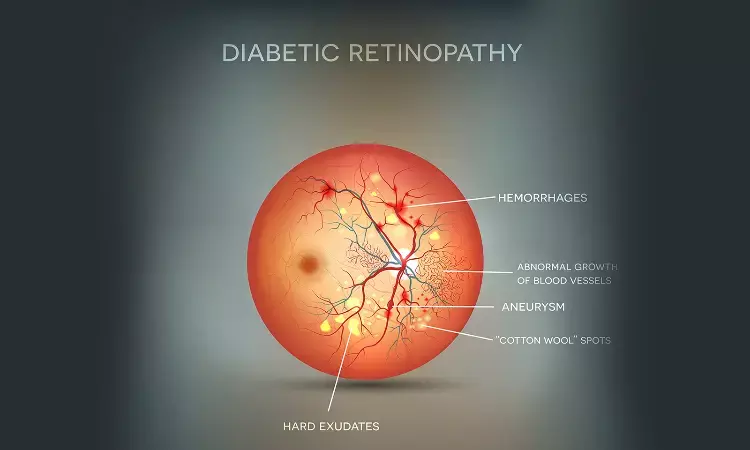- Home
- Medical news & Guidelines
- Anesthesiology
- Cardiology and CTVS
- Critical Care
- Dentistry
- Dermatology
- Diabetes and Endocrinology
- ENT
- Gastroenterology
- Medicine
- Nephrology
- Neurology
- Obstretics-Gynaecology
- Oncology
- Ophthalmology
- Orthopaedics
- Pediatrics-Neonatology
- Psychiatry
- Pulmonology
- Radiology
- Surgery
- Urology
- Laboratory Medicine
- Diet
- Nursing
- Paramedical
- Physiotherapy
- Health news
- Fact Check
- Bone Health Fact Check
- Brain Health Fact Check
- Cancer Related Fact Check
- Child Care Fact Check
- Dental and oral health fact check
- Diabetes and metabolic health fact check
- Diet and Nutrition Fact Check
- Eye and ENT Care Fact Check
- Fitness fact check
- Gut health fact check
- Heart health fact check
- Kidney health fact check
- Medical education fact check
- Men's health fact check
- Respiratory fact check
- Skin and hair care fact check
- Vaccine and Immunization fact check
- Women's health fact check
- AYUSH
- State News
- Andaman and Nicobar Islands
- Andhra Pradesh
- Arunachal Pradesh
- Assam
- Bihar
- Chandigarh
- Chattisgarh
- Dadra and Nagar Haveli
- Daman and Diu
- Delhi
- Goa
- Gujarat
- Haryana
- Himachal Pradesh
- Jammu & Kashmir
- Jharkhand
- Karnataka
- Kerala
- Ladakh
- Lakshadweep
- Madhya Pradesh
- Maharashtra
- Manipur
- Meghalaya
- Mizoram
- Nagaland
- Odisha
- Puducherry
- Punjab
- Rajasthan
- Sikkim
- Tamil Nadu
- Telangana
- Tripura
- Uttar Pradesh
- Uttrakhand
- West Bengal
- Medical Education
- Industry
OCTA helps predict optical complications in Diabetic Retinopathy

A recent study published in Ophthalmology Retina Journal suggest that optical coherence tomography angiography (OCTA) can predict the development of clinical outcomes in eyes with non-proliferative diabetic retinopathy (NPDR), and could also be useful in guiding early intervention and preventing visual impairment.
Diabetic retinopathy (DR) is a chronic and progressive ocular disease that affects people with diabetes, and is a leading cause of blindness worldwide. Early detection and management of DR is critical for preventing visual impairment and blindness. In recent years, the development of OCTA has allowed for the evaluation of retinal blood flow and the identification of capillary nonperfusion in the retina. The study by Janice Ong and team was aimed to evaluate the ability of capillary nonperfusion parameters on OCTA to predict the development of clinically significant outcomes in eyes with NPDR.
In this prospective longitudinal observational study, a total of 59 patients with treatment-naive moderate to severe referable NPDR were imaged with OCTA at baseline and followed for 1 year. Two OCTA capillary nonperfusion metrics, vessel density (VD) and geometric perfusion deficits (GPDs), in the superficial capillary plexus, middle capillary plexus, and deep capillary plexus were evaluated.
The key highlights of this study were:
Geometric perfusion deficits and vessel density in the middle and deep capillary plexus were predictive of clinically significant outcomes at 1 year. These outcomes were defined as one or more of the following: vitreous hemorrhage, center-involving diabetic macular edema, and initiation of treatment with pan-retinal photocoagulation or anti-VEGF injections.
Eyes with these outcomes had lower vessel density and higher geometric perfusion deficits, indicating worse nonperfusion of the deeper retinal layers than those that remained free from complications. These differences remained significant when other factors such as sex, baseline corrected visual acuity, and baseline DR severity were considered.
Evidence of deep capillary nonperfusion at baseline in eyes with referable NPDR can predict short-term DR complications with high accuracy. This suggests that deep retinal ischemia plays an important role in DR progression, and that OCTA may provide additional prognostic benefit to clinical DR staging in high-risk eyes.
Source:
Ong, J. X., Konopek, N., Fukuyama, H., & Fawzi, A. A. (2023). Deep Capillary Nonperfusion on OCT Angiography Predicts Complications in Eyes with Referable Nonproliferative Diabetic Retinopathy. In Ophthalmology Retina (Vol. 7, Issue 1, pp. 14–23). Elsevier BV. https://doi.org/10.1016/j.oret.2022.06.018
Neuroscience Masters graduate
Jacinthlyn Sylvia, a Neuroscience Master's graduate from Chennai has worked extensively in deciphering the neurobiology of cognition and motor control in aging. She also has spread-out exposure to Neurosurgery from her Bachelor’s. She is currently involved in active Neuro-Oncology research. She is an upcoming neuroscientist with a fiery passion for writing. Her news cover at Medical Dialogues feature recent discoveries and updates from the healthcare and biomedical research fields. She can be reached at editorial@medicaldialogues.in
Dr Kamal Kant Kohli-MBBS, DTCD- a chest specialist with more than 30 years of practice and a flair for writing clinical articles, Dr Kamal Kant Kohli joined Medical Dialogues as a Chief Editor of Medical News. Besides writing articles, as an editor, he proofreads and verifies all the medical content published on Medical Dialogues including those coming from journals, studies,medical conferences,guidelines etc. Email: drkohli@medicaldialogues.in. Contact no. 011-43720751


